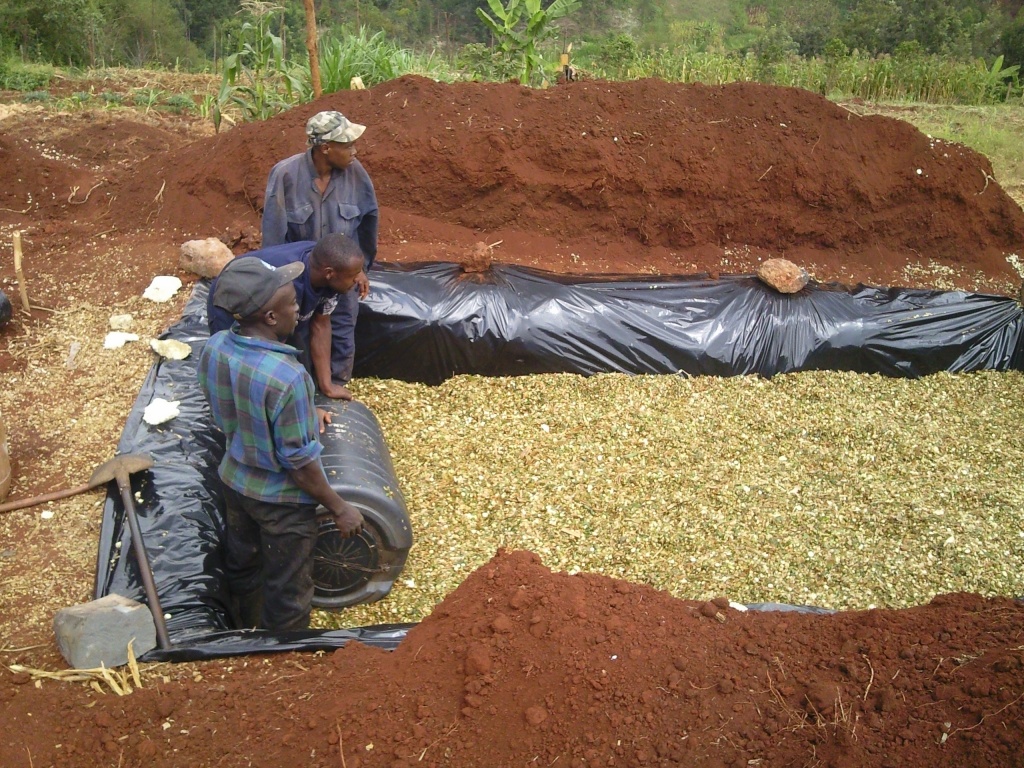
By George Munene
Willson Arusei, a farmer at Baringo County has set up fodder storage units and is bulking up his forage reserves in anticipation of the La Niña forecasted to hit East Africa from January 2021 by the World Meteorological Organisation (WMO)
"I was forced to sell most of my herd at throwaway prices in 2017 due to that year’s acute drought. To avoid being flat-footed this time around, I stocked up on hay bales in August and September when balers were delivering directly to farms for Sh100-Sh150. Now the prices have shot up to Sh200-Sh300,” Wilson says.
The 2016-2017 drought which was declared a national emergency in April 2017 was catastrophic for livestock farmers with its effects still reverberating to this day. “Herders were selling their malnourished cows for a little as Sh2000, goats were being disposed of for Sh300. I had to sell six of my cows which averaged 14 liters for Sh11,000 each, it was devastating,’’ Wilson shudders looking back.
Related News: Kericho farmer builds model dairy unit milking 520 litres daily
Related News: Dairy farmers enjoy record year milk prices
With most feed constituents being imports, the Kenyan shilling trading at historical lows of 111.55 against the US dollar has led to an inflation of 20 per cent in feed prices. Major Kenyan millers are operating at below capacity due to a dearth of raw materials; a 70 kg dairy meal bag now retails for Sh2450 up from Sh2100 a few short months ago. The projected drought only further increase the prices of livestock concentrate.
The predicted drought may also add to food stress in a region already reeling from the devastation wrought by desert locust invasions and Covid-19’s disruption of food systems.
“Because October to December is a major farming season for Kenya, Somalia, Ethiopia, Rwanda, Burundi, Uganda, and Tanzania, it is feared the drier than usual coming season might impact crops and pastures,” said the Intergovernmental Authority on Development (Igad) in a press release, on the situation in the eight-member countries.
According to Yaquby Bachu an animal husbandry consultant, to prepare for an acute fodder shortage farmers should be focused on having forage reserves that sustain their cow’s base energy requirements for at least three months.
“You can supplement protein into an animal’s diet through protein blocks which are also compounded with salts; these come in 2.5 kg slabs given to animals to lick for 30 to 35 minutes in the morning and the evening. They retail for Sh400 and provide sufficient protein requirements for two weeks. For forage purposes, however, there are no supplements; you’ll either have the required plant fodder or not,” Bachu says.
Dry grasses and maize stovers make for ideal feed when fodder is in short supply. However, to extract their nutrient potential farmers need to break down their lignin/outer covering which is not readily broken down by rumen microbes. This is done by fermenting feed in water and molasses.
“If fed directly to cows, dry grasses and maize stalks will wind up as excreted waste rather than being synthesized and utilized by the animal’s body; most Kenyan farmers have the grass to feed their cows but wind up making cow dung rather more beneficial constituents such as milk and meat,” Bachu illuminates.
Related News: Factsheet: Calf to cow expert feeding guide for maximum milk—Part 1
Related News: Feeding livestock with a mixture of Napier grass and desmodium increases milk yields
In a plastic 200 liter drum or a low-cost ground silo, three bales of hay, 15-17 kilograms, are complemented with two kilograms of dried maize cobs and stover, chopped, then thoroughly mixed in with 45 liters of water. A molasses-water mixture is then splayed into this at the farmer’s discretion ensuring all the feed is well watered. Feed-in a 200-liter drum can cater to two cows for three days.
A daily five-kilogram ration provides sufficient feed for bigger cows. Smaller cows and heifers need three to four-kilograms. This can be further supplemented with 3000 to 500 grams of ground maize, maize bran or germ if available.
“If the weatherman turns out to be wrong, my cows will still have feed and I can look to sell or make biomass of the rest; the consequences of failing to prepare as I learned are far direr,” Arusei says.
















Comments powered by CComment